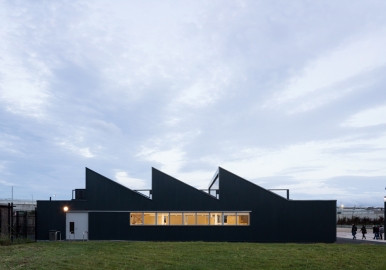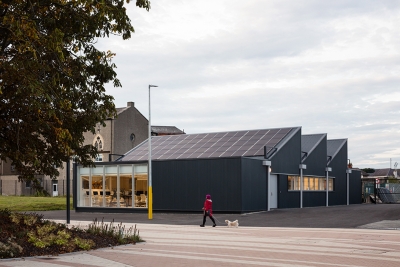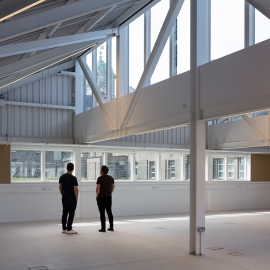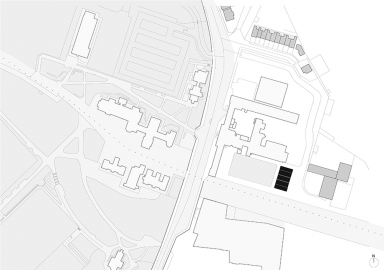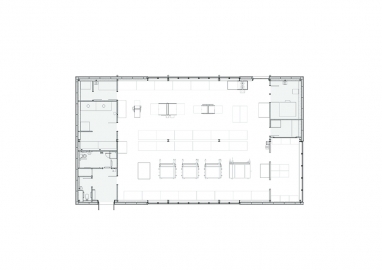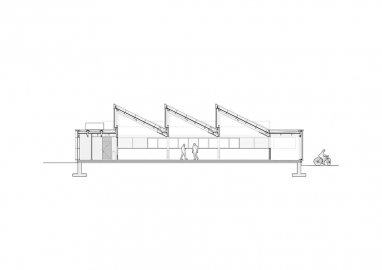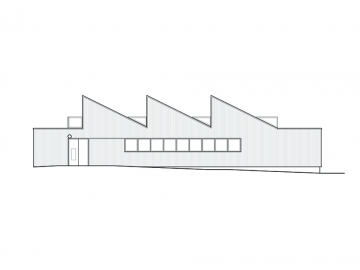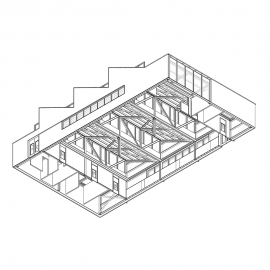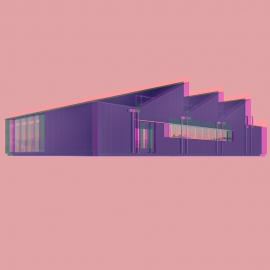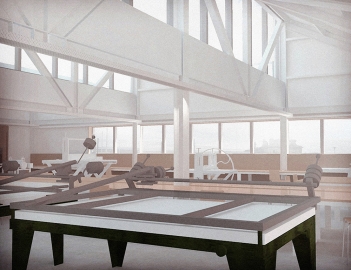Printmaking Studio, Grangegorman
The project was initially to find a temporary home for printmaking within TU Dublin using portable modular cabins, however during the early stages of design, our team demonstrated better value for both our client and users with a purpose-built, robust, flexible solution offering a multitude of future uses beyond that as a studio.
Printmaking was originally part of the brief for the recently completed School of Creative Arts East Quad development. However, during that project, the project scope was adjusted and Printmaking was slated to stay on as a satellite in the North House Building in the centre of the developing Campus, while the remainder of their School migrated to the new East Quad building on St Brendan’s Way. When the North House Building then became earmarked for development as the new Academic Hub and Library, Printmaking again found itself in need of a temporary home, resulting in the Printmaking Studio, in what was originally envisaged to be modular cabins.
The building is located along the pedestrianised St Brendan’s Way, where the fringe of the new TU Dublin Grangegorman Campus meets the industrial landscape of the former Broadstone Railway Station and Bus Depot. It is a distinctive, though small building on campus, with its three-pronged saw-tooths visually linking it to the urban industrial infrastructure beyond the university. The solitaire building form is placed such that it edges itself on to the pedestrian route opposite the entrance to the East Quad linking the campus to Broadstone Light Rail stop. This prominent location allows street life to quite literally slice through university life. From St Brendan’s Way full height windows allow views deep into the Workshop. It means that the hands-on nature of the student and staff work — increasingly rare in the current tilt to virtual means of communication — is on show constantly.
Under the three central saw-tooth bays is the large naturally lit main workshop for non-chemical processes, whilst acid etching and aquatinting, requiring controlled environments, take place in smaller technical rooms adjoining the workshop to the north and south.
Construction had to be completed within a comparable low-budget and fast-timescale as a modular-cabin build, and be accessible to as many small-to-medium scale contractors as possible. The design team looked at how industry normally made fast, low-cost buildings, e.g., retail parks, industrial units, and warehouses, and the architectonic language grew from there. As such, the building is one of prefabricated structural steel trusses, purlins, pre-coated liner sheets inside, corrugated lightweight metal outside with thick mineral wool insulation sandwiched in between.
The Workshop was not intended as a representation or pastiche of an industrial space. Instead, we were searching for a place of specific character, a place for production, a place to be robustly engaged with and altered.
The saw-tooth roof form is orientated optimally, with three fully glazed north lights and south facing sloped roofs hosting a full array of 40 photovoltaic panels on the southernmost bay.
The primary structure comprises repetitive steel frame trusses on columns using standard steel section sizes enveloped in built-up layers of low-cost thin metal liner sheets, thick mineral wool insulation and corrugated steel cladding. A focus on an economy of means and an attention to the external edges of the building lends it a precision and refinement not normally associated with these building types. Internally we developed construction details which were limited in number, unsophisticated but purposeful. Subtle spatial characters such as the truss bottom chords, caryatid-like UC columns, moveable walls on castors and a fully glazed Admin annex to the south produce nodal points and overlapping room-like divisions within a simple enclosure.
The Printmaking Studio is the client’s first project to achieve Part L NZEB (Nearly Zero Energy Buildings) targets.

